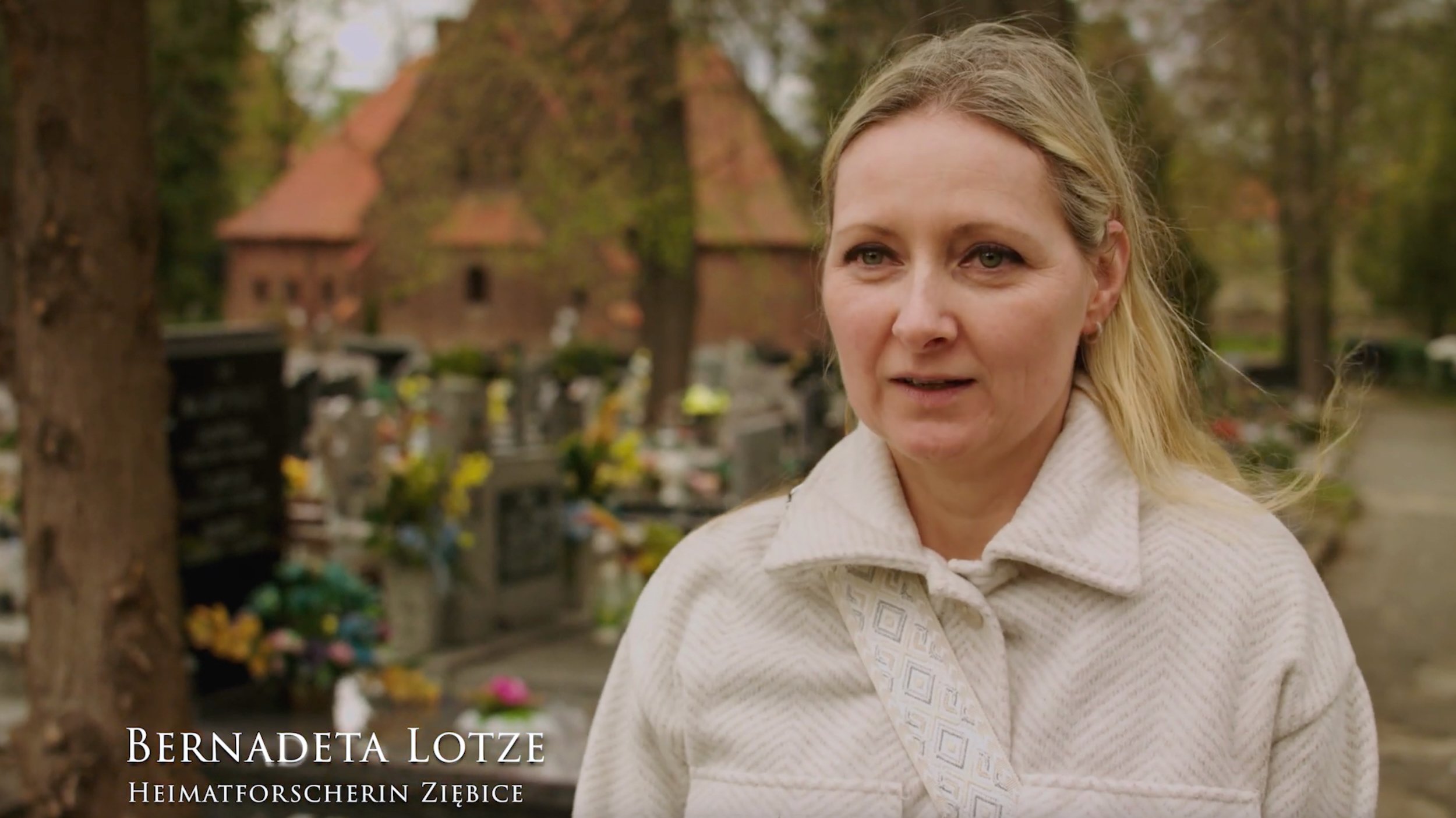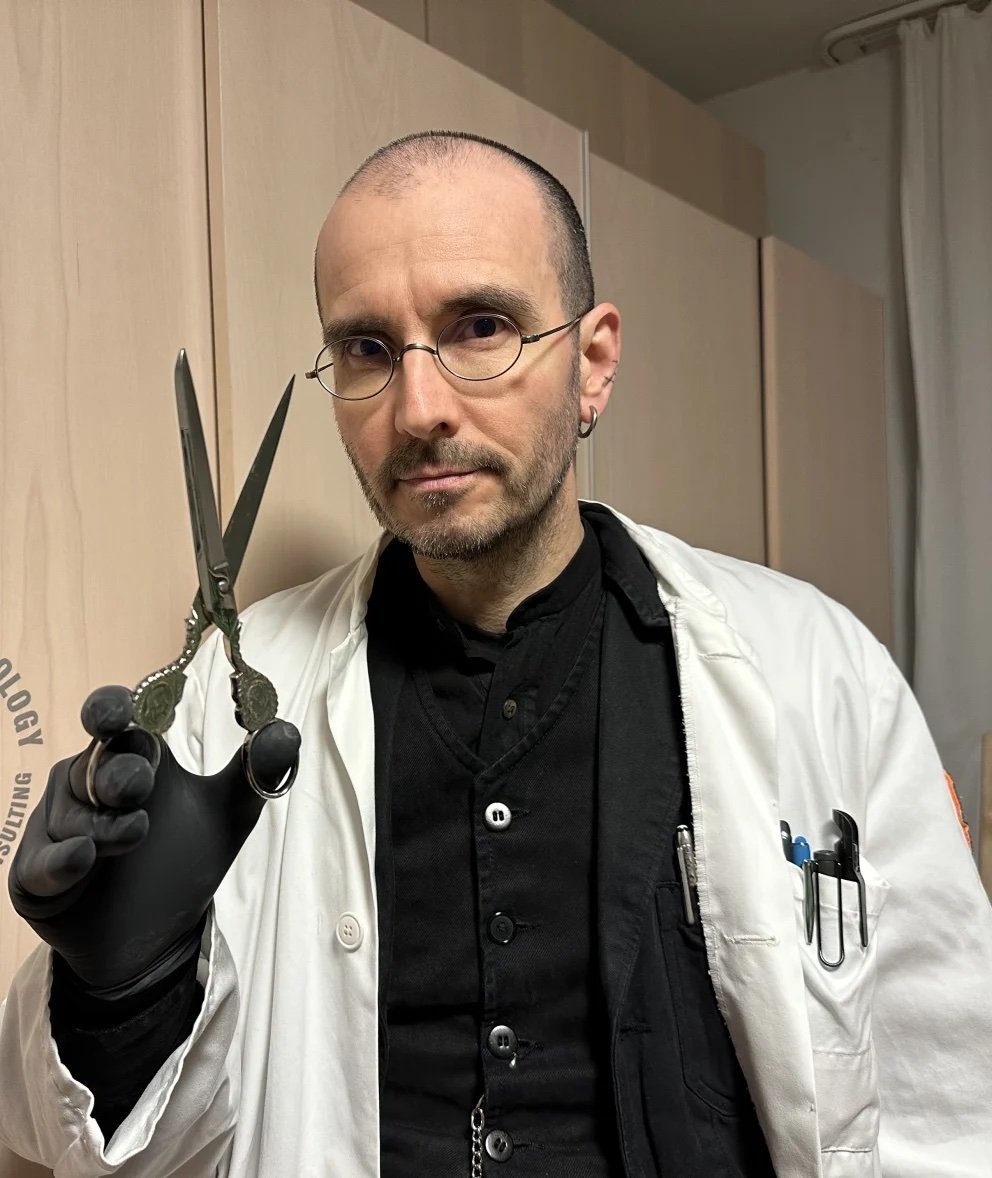Wie meinen Sie das?
Sagen wir mal, die Leiche liegt im Bett und fängt an zu stinken. Dann räumt der Partner sie in einen Schrank. Dann verändern sich dadurch natürlich auch die Fäulnis oder die Spuren an der Leiche. Auch der Fundort verändert sich: Plötzlich gibt es im Raum Schleifspuren, oder die Totenflecken der Leiche sind an der falschen Stelle. Manchmal gibt es auch Menschen, die wischen die Eierpakete weg, die die Schmeißfliegen in den Augen und geeigneten Stellen ablegen. Manchmal aber auch nicht. Dann hat man eben dicke Madenteppiche im Gesicht, an den Ohren, unter den Armen oder im Genitalbereich. Es gibt aber auch Partner, die die Leiche waschen. Oder es gibt Mischformen von all dem. Aus Thailand habe ich zum Beispiel einmal den Fall einer Familie erhalten, die ihre Oma einfach aufs Sofa gelegt haben. Auch die Brille haben sie ihr einfach gelassen. Der ganze Körper war mit dem Sofa verklebt. Aber die Oma gehörte eben zur Familie.
Laut Auskunft der Polizei war Betsy Arakawa zum Teil mumifiziert. Was bedeutet das?
Das Wort sollte man eigentlich nicht benutzen. Weil die Leute dann sofort an Ägypten denken. "Mumifiziert" heißt einfach nur vertrocknet. Das Klima in Santa Fe ist ja sehr trocken. Also wurde das Gewebewasser abtransportiert. So wie halt alles Leichengewebe unter bestimmten Umständen vertrocknet. Schinken, Salami: Das ist ja alles nur vertrocknetes Leichengewebe.
Was könnten Sie als Kriminalbiologe alles aus Körpern herauslesen, die schon seit 15 Tagen irgendwo liegen?
Anhand von Insekten kann ich die Leichenliegezeit bestimmen. Ich schaue, welche Insekten es gibt. Und an welchen Körperstellen sie auftreten. Gibt es ungewöhnliche Besiedlungsstellen? Zum Beispiel kann ich Leichname auf bestimmte Vernachlässigungszeichen hin untersuchen. Dann schaue ich, ob im Genitalbereich oder an irgendeiner ungewöhnlichen Stelle eine besonders starke Besiedelung durch Insekten schon vor dem Tod stattgefunden haben muss. Weil die Insekten an diesen Stellen dann viel älter sind als am Rest des Körpers. Oder weil es Tiere sind, die an Kot und Urin gehen.
Wann könnte solch eine Untersuchung von Vernachlässigungszeichen von Interesse sein?
Eine Versicherung könnte zum Beispiel sagen: "Wir haben hier Geld an eine pflegende Person ausgezahlt. Aber diese Person scheint gar keine Pflege durchgeführt zu haben. Also hätten wir jetzt gerne unser Geld zurück." Da kann eine solche Untersuchung interessant werden.
Die Todesdaten von Gene Hackman und seiner Frau wurden mit Hilfe von Daten von Videokameras und Herzschrittmachern bestimmt. Wie genau hätten Sie den Todeseintritt mit rein biologischen Mitteln bestimmen können?
Den hätte ich mit Hilfe von Schmeißfliegenlarven bestimmen können. Oder wenn die Körper tatsächlich schon länger da lagen, dann auch über andere Tiere. Zum Beispiel mit Hilfe von Speckkäferlarven.
Hätten Sie den Tod damit genau datieren können?
Das hängt davon ab, wie viele Vergleichsdaten für Insekten aus Santa Fe vorhanden sind. Es gibt in den USA eigentlich relativ gute Wachstumsdaten von den einzelnen Insekten an den jeweiligen Orten.
Wie nah wären Sie dann an das genaue Todesdatum herangekommen?
Falls es stimmt, dass die beiden Körper ungefähr ein bis zwei Wochen dort lagen, dann kann man das Todesdatum gut eingrenzen. Ungefähr auf den Vormittag oder den Nachmittag eines bestimmten Tages. Aber das hängt alles von den örtlichen Vergleichstabellen mit den Wachstumsdaten der Insekten ab.
Erstaunlich, dass Sie mit rein biologischen Mitteln eigentlich ähnlich präzise sein können wie die Ermittler mit ihren technischen Spuren.
Ja. Aber natürlich wählt man immer das einfachste Mittel. Vor Ort kämen ja immer drei Parteien für Ermittlungen infrage: Polizei, Rechtsmedizin und Kriminalbiologie - also Spurenkunde. Und wenn ich jetzt bei der Polizei bin und sowieso schon vor Ort bin, dann nehme ich natürlich die sogenannten technischen Spuren. Wozu soll ich da eine biologische Zusatzinfo einholen?
Die amerikanischen Ermittler haben etwa eine Woche lang gebraucht, um das Rätsel zu lösen: Betsy Arakawa starb an Hantavirus, Gene Hackman an Herzversagen. Haben diese Ermittler einen guten Job gemacht?
Es geht keinen etwas an, das zu beurteilen. Einfach Fresse halten. Wir waren nicht dabei.
Der Sheriff sagte einen Tag nach dem Fund, die Leichen hätten schon mindestens einen Tag vor dem Fund auf dem Boden gelegen. Nun hat Betsy Arakawa dort aber schon über zwei Wochen gelegen. Ein Tag war also eine ziemliche Fehleinschätzung. Ist es verwunderlich, dass ein Sheriff so etwas sagt?
Er hat ja gesagt: Mindestens einen Tag. Insofern stimmt es. Aber grundsätzlich gilt: Laien können Leichenliegezeit nicht einschätzen. Wenn jemand nur vom Augenschein versucht, die Liegezeit zu schätzen, geht das immer schief. Da nützt alle Berufserfahrung nichts.
Wie kommt das?
Weil es sehr stark von den Umwelt-Bedingungen vor Ort abhängt.
Haben Sie ein Beispiel?
Nehmen wir an, ich bin Coroner, Sheriff oder Priester und habe schon viele Leichen in meinem Leben gesehen. Nun komme ich aber an einen Ort mit einer seltenen Besonderheit. Nehmen wir an, der Ort ist mit einer Tür verschlossen. Aber unter der Tür ist ein Schlitz. Und auf der anderen Seite des Raumes ist durch einen baulichen Zufall auch ein Schlitz. Den aber keiner sieht, weil er hinter einem Schrank ist. Dann hat man einen Luftkanal zwischen den beiden Schlitzen wie in einem dieser Händetrockner. Und plötzlich hat man völlig andere Feuchtigkeits- und Lufttransportbedingungen. Ganz unabhängig von der allgemeinen Temperatur in dem Raum. Wenn nun die Leiche vor diesem Türschlitz liegt, dann wird das Körperwasser sehr viel schneller abtransportiert, als wenn sie auch nur einen Meter weiter links oder rechts in derselben Wohnung liegen würde. Hier nützt es mir also nichts, wenn ich schon Dutzende Tote gesehen habe. Deswegen muss man das vernünftig vor Ort untersuchen. Mit technischen oder eben biologischen Mitteln.
Gene Hackman hat gut eine Woche länger als seine Frau gelebt. Er litt an Alzheimer in einem fortgeschrittenen Stadium. Als die Rechtsmedizinerin seinen Magen untersuchte, fand sie dort kein Essen. Sie haben ein sehr nüchternes Verhältnis zur menschlichen Vergänglichkeit. Aber ist der Tod nicht einfach ein verdammtes Arschloch?
Wie meinen Sie das?
Macht Sie solch ein Fall melancholisch oder traurig?
Ja, klar. Es ist schade, dass die beiden keine Sozialkontakte mehr hatten. Aber wie ich schon am Anfang sagte: Das ist total normal. Deswegen nenne ich diese Menschen auch "Invisible People". Nach einer Geschichte des New Yorker Comiczeichners Will Eisner. Diese Invisible People sind überall. Sie sind nicht der rosa Elefant, der mitten im Raum steht. Sondern sie sind das Hintergrundrauschen auf unserer Welt. Das sind die vergessenen Leute. Sie sind das Allerhäufigste, das wir bei Wohnungsleichen sehen. So ist das halt. Das hat mit dem Tod an sich nichts zu tun. Das hat etwas damit zu tun, dass diese Menschen keine Sozialkontakte mehr haben.
Sie verabscheuen Gefühlsduselei mehr als jeden Leichengestank. Gab es trotzdem einen Fall, der Sie gerührt hat?
Es sind die Angehörigen, die mich bewegen. Vor allem, wenn sie nicht genug Informationen haben. Oft machen sich diese Menschen in ihrer Trauer etwas vor. Viele suchen dann nach einem Mörder, wo es keinen gibt. Irgendwann lädt die dann keiner mehr ein. Dann heißt es: "Du, Renate, dein Mann ist vor zehn Jahren gestorben. Wir wollen jetzt einfach Silvester feiern. Wir haben das schon vor fünf Jahren gesagt. Du sollst nicht wieder anfangen mit dem Mord an deinem Mann. Vielleicht ist er ermordet worden. Vielleicht nicht. Auf jeden Fall laden wir dich jetzt nicht mehr ein." Die Menschen kriegen Posttrauma-Störungen. Die gucken dann nur noch gegen die Wand. Oder wenn Kinder versterben. Bei erweiterten Selbsttötungen im Partnerschaftsbereich zum Beispiel. Dann suchen die Großeltern für den Rest ihres Lebens nach Antworten und geben ihr gesamtes Geld an irgendwelche windigen Pfeifen aus, die sich ihr Leben dadurch finanzieren, dass sie alte Leute ausnehmen. Das Hauptproblem ist, dass die Angehörigen keine Ansprechpartner haben.
Inwiefern?
Die Polizei ist für diese Menschen nicht zuständig. Wenn ein Mensch ums Leben kam, es aber kein Kriminalfall war, dann sagt die Polizei: "Gucken Sie mal, es ist kein Kriminalfall. Bitte. Wir haben hier solche Stapel an echten Kriminalfällen liegen. Wir sind nicht zuständig. Die Staatsanwaltschaft hat ja auch gar kein Verfahren eröffnet. Das hat Ihnen die Polizei auch alles schon erklärt. Bitte, entschuldigen Sie, aber wir möchten uns gerne um die Drogenhändler, Mörder, Vergewaltiger und die häusliche Gewalt kümmern. Verstehen Sie?" - "Nein", sagt die trauernde Person dann, "verstehe ich nicht. Ich möchte wissen, warum mein Mann getötet wurde."
Also nimmt Sie so etwas schon mit.
Klar ist das alles scheiße. Auch diese ganzen Genozide, die wir sehen, und die keinen Menschen interessieren. Aber ich kann es ja nicht ändern. Was ich aber ändern kann: dass den Menschen ihnen wichtig erscheinende Informationen nicht vorenthalten bleiben. Das kann ich als freiberuflicher Forensiker mit meinem Team vor Ort oder im Labor ändern. Hier geht es um Lösungen, nicht um weinerliches Gejammer.
Gibt es einen konkreten Fall, der nicht nur ein interessantes Rätsel war, sondern Sie auch gerührt hat?
Wir hatten einen Fall, da kam eine Familie und sagte, sie habe ein Gemälde, das weint. Aber keine Bluttränen, sondern Wasser. In der Familie war jemand ertrunken, und der Glaube war nun, dass das Gemälde nicht Tränen weint, sondern das Wasser aus dem Gewässer, wo die Person ertrunken ist. Also habe ich gesagt: "Okay, untersuchen wir, kein Problem. Vielleicht können Sie dann ja besser in die Trauerarbeit gehen. Oder können durch die Informationen innerhalb der Familie dann mal besprechen, was da los ist. Das können Sie ja dann für sich selbst einordnen. Ich kann Ihnen nur sagen, ob das Süßwasser ist, Salzwasser, Öl oder Farbe." Sobald Angehörige beteiligt sind, sind echte Gefühle im Spiel. Die sind messbar. Natürlich bemerke ich die. Und die springen dann auch über. Sie beeinflussen mich aber nicht.
Wie schützen Sie sich vor dem Grauen und dem Entsetzen des Todes?
Es ist, wie es ist. Ich kann es doch auch nicht ändern. Ich meine, ich bringe die Leute ja nicht um oder stopfe sie ins Massengrab. Ich bin nicht derjenige, der Lampenschirme aus Menschenhaut näht. Ich verwende keine Tierprodukte. Ich tue, was ich kann. Aber der Tod scheint ja keinen Menschen zu schrecken. Folter und Ausbeutung interessiert ja auch kaum jemanden. Die Leute trinken Milch und essen Butter, zerhackte Tintenfische und Schweine-Schnitzel. Es scheint fast allen Menschen scheißegal zu sein. Keine Ahnung, warum den Menschen das einfach alles so völlig egal ist. Ich verstehe das nicht. Aber ich bin ja nicht derjenige, der es tut. Ich arbeite lieber an der Lösung, anstatt herumzujammern, dass irgendwas scheiße ist und mir dann die nächste Scheibe Schinken aufs Brot zu legen. Keine Ahnung. Ist mir auch ein Rätsel, was mit den Leuten los ist.
Verursacht Ihr Beruf Ihnen Albträume?
Nö, eigentlich nicht. Das Problem ist eher der Tag. Wenn die ganzen angeblich guten und braven Menschen herumlaufen und sich unsozial verhalten. Nachts ist es eigentlich angenehmer als tags.



































